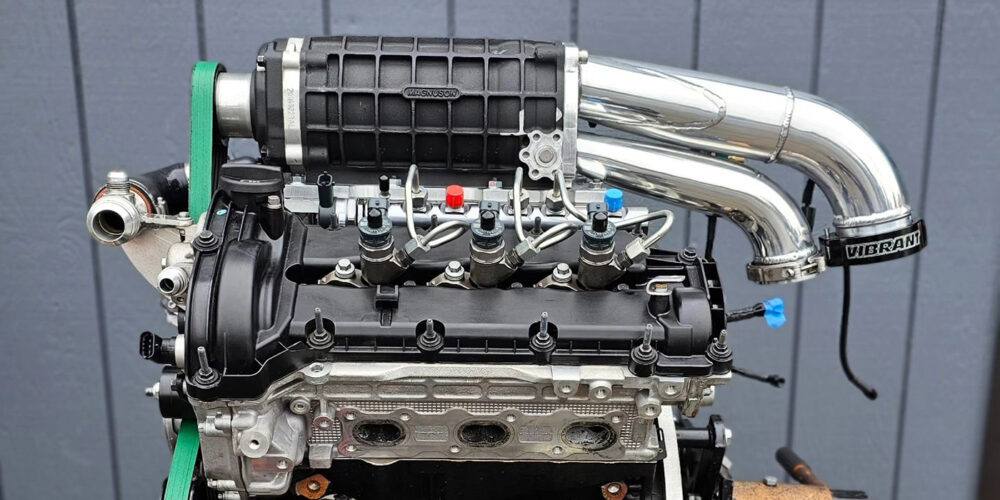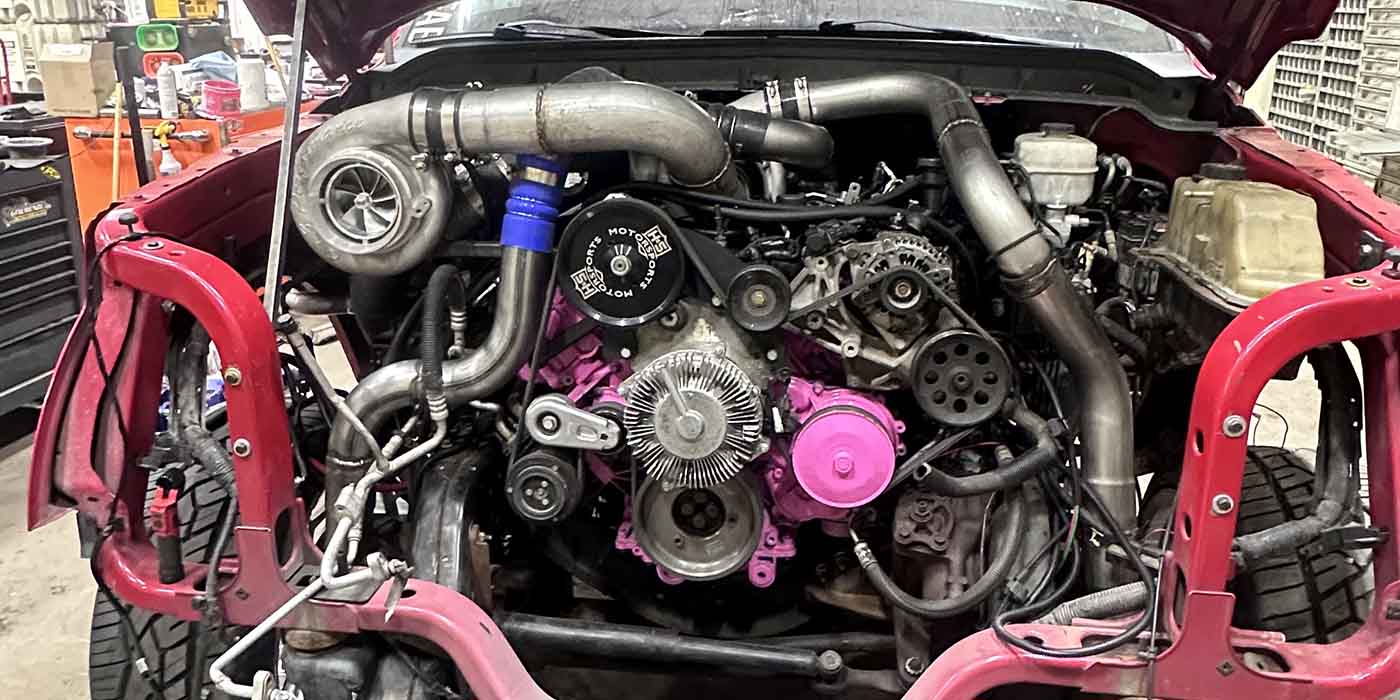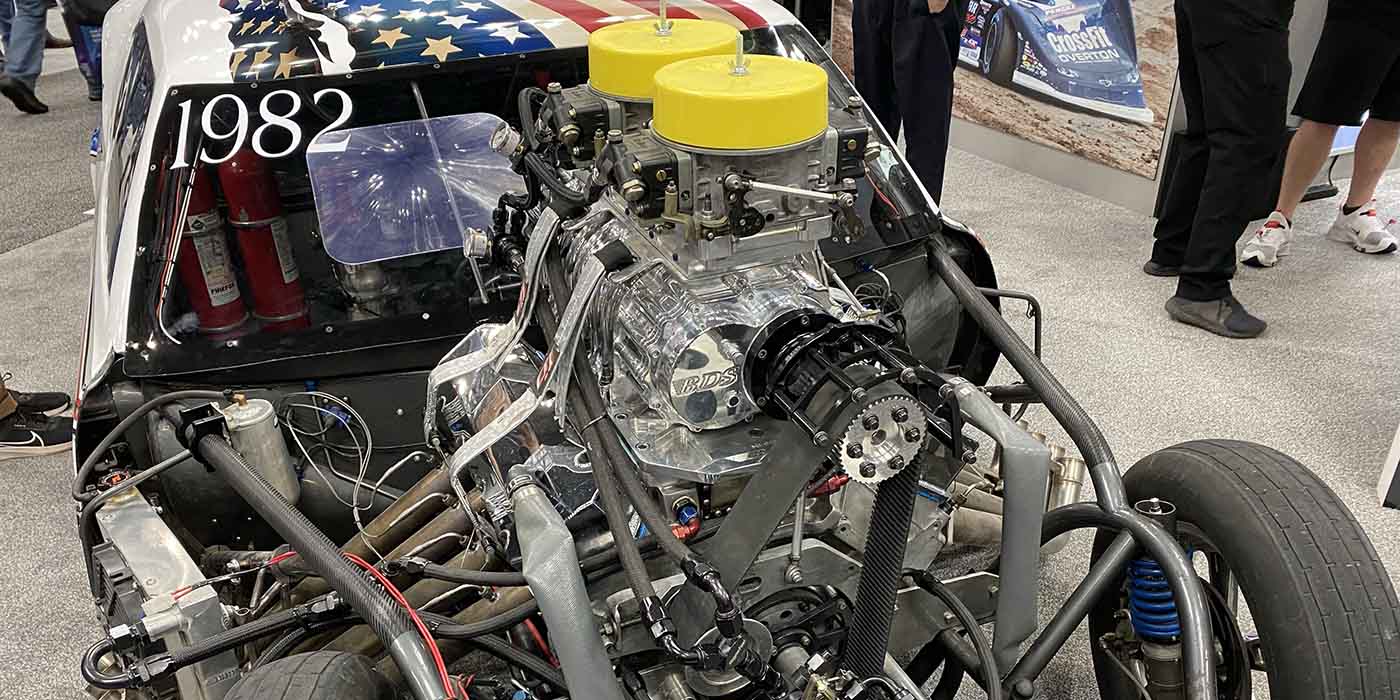The topic of forced induction is a frequent one in the engine building community because it offers a fantastic opportunity for big performance enhancement with relatively minimal hassle and expense. When it comes to forced induction, there are essentially two paths you can go down – turbocharging or supercharging – and each has its pros and cons. But, what if you were to combine the two?
Turbocharging offers numerous advantages. Firstly, turbochargers are renowned for an ability to generate significant power gains. By utilizing exhaust gases to spin a turbine, they compress the incoming air and supply it to the engine. This results in enhanced performance and acceleration. Turbochargers also excel in fuel efficiency compared to superchargers, as they harness otherwise wasted energy from exhaust gases. Furthermore, turbocharging provides a wider power band, meaning engines equipped with turbos offer a broader range of power across various engine speeds.
Nevertheless, there are also downsides to turbocharging. One of the main challenges is turbo lag, which refers to the delay in power delivery experienced when the engine rpm is low, and the turbocharger requires time to spool up. This can result in delayed throttle response, which may be undesirable for certain drivers. Turbocharging systems also tend to be more complex, necessitating additional components like intercoolers and wastegates. The heightened complexity can lead to increased maintenance and installation costs.
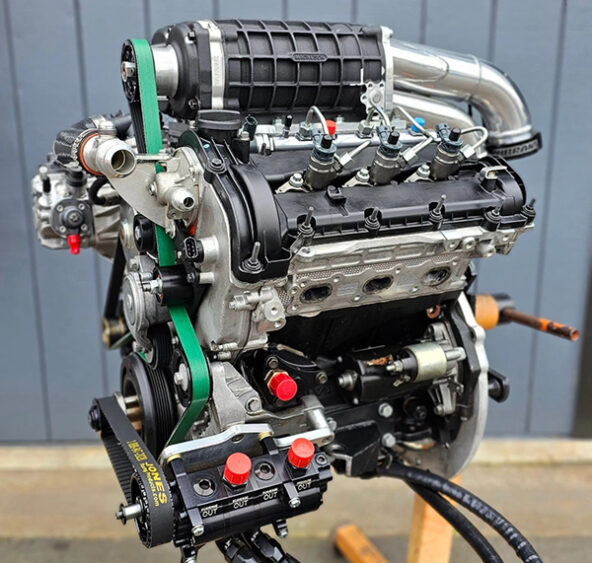
On the other hand, supercharging presents its own set of advantages. Superchargers are mechanically driven by the engine’s crankshaft, providing instant power delivery without the lag associated with turbos. This instantaneous response enhances throttle response, making superchargers a popular choice for high-performance applications. Supercharged engines also tend to exhibit a more linear power delivery, ensuring consistent acceleration throughout the rpm range.
However, superchargers have some drawbacks as well. They consume power from the engine to drive the compressor, which can result in reduced fuel efficiency compared to turbochargers. Additionally, superchargers generate more heat due to their mechanical drive system, which can impact engine cooling and necessitate additional cooling mechanisms. Supercharging systems are generally bulkier and heavier than turbos, potentially affecting the overall weight distribution and handling of the vehicle.
Compound-turbo and twin-turbo setups are often utilized to further the benefits of turbocharged engines, typically for diesel applications and gas applications, respectively. This typically will reduce turbo lag depending on the setup and modifications done to the engine. Racers usually opt for a big single or a compound setup, or opt for various styles of superchargers.
However, there’s another forced induction option the industry hasn’t widely adopted yet – twin-charging. Not to be confused with twin-turbocharging, twin-charging is the innovative combination of a supercharger and a turbocharger. It’s nothing new – Lancia, Nissan and Volkswagen were among the first to use the combination back in the ‘80s, but it’s hardly common today. Volvo is the only major manufacturer to continue using twin-charging in many of its models today.
Twin-charging is utilized for a variety of reasons, but mainly it serves as Volvo’s replacement for large displacement engines, something we’ll see first-hand in the example we used for this article. As you’ll come to see, twin-charging not only works for passenger cars, but has its merits in the performance and racing world as well.
To delve deeper into the topic, we had the privilege of speaking with Andrew Stauffer, co-owner of S&S Diesel Motorsport, about an impressive twin-charged engine they recently had a hand in building for racer Scott Birdsall of Chuckles Garage noteriety.
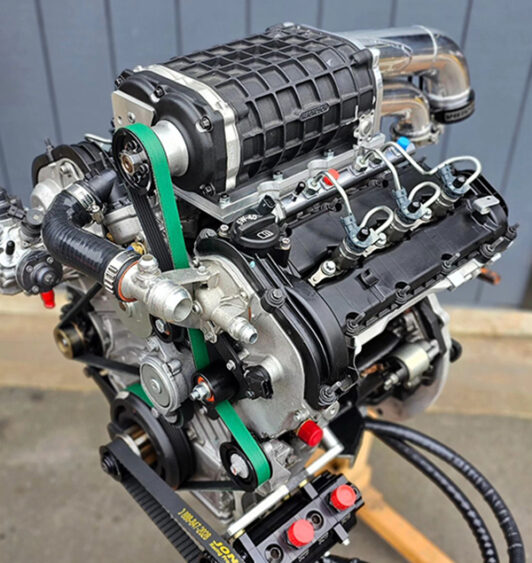
“This particular twin-charging setup is something I’ve been excited about for a long time,” Stauffer says. “It’s a concept I truly believe in and have witnessed its impressive performance firsthand.”
The engine used by Birdsall for the 2023 Pikes Peak International Hill Climb is a 3.0L EcoDiesel. Not what you expected, right? The 3.0L EcoDiesel engine produces only 260 horsepower depending on the specific model and configuration, however, one of the notable strengths of the EcoDiesel is its high-torque output.
It generates 480 lb.-ft. of torque, providing robust low-end power and towing capability. It also incorporates advanced fuel injection technology to optimize fuel combustion and efficiency, contributing to its better fuel economy. Those strengths aside, you wouldn’t assume the 3.0L EcoDiesel would be the first choice for use in a performance application, let alone for it to go inside Birdsall’s LMP-1 Pikes Peak race car. But, the unassuming engine is made up for with the twin-charged setup, and some aftermarket additions and inventive engine building from the team over at Freedom Racing Engines.
“We’ve never been able to make good power with a supercharger-only setup on a diesel,” Stauffer admits. “But, when you combine a supercharger with a turbocharger, magic happens.”
The concept of twin-charging involves using a supercharger to make the turbocharger believe the engine has a larger displacement. In the case of the 3.0L EcoDiesel, the supercharger generates approximately 15-lbs. of boost, tricking the turbo into thinking you have something closer to a 6.0L. This unique approach ensures quicker spooling of the turbocharger, resulting in exceptional low-end power and torque. As the rpm increases, the supercharger’s contribution gradually diminishes over time, allowing for a smooth transition and optimal performance from both components.
“You get the best of both worlds with this setup,” he notes. “The supercharger provides immediate low-end power, while the turbocharger delivers high-end power. The combination offers exceptional drivability without sacrificing top-end performance.”
The versatility and performance of twin-charging make it suitable for various racing scenarios, including drag racing, off-road racing, and even the demands of the Pike’s Peak Hill Climb. Obviously, a setup will need to be tuned vastly different for those various applications.
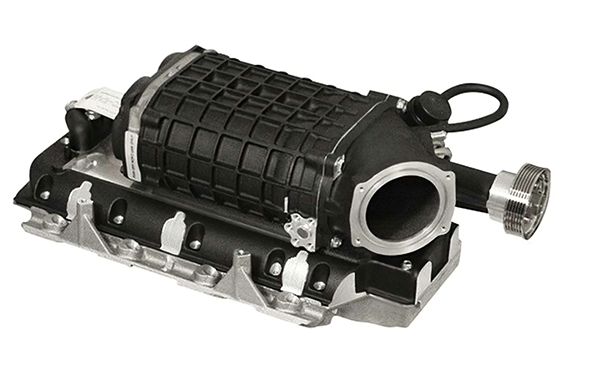
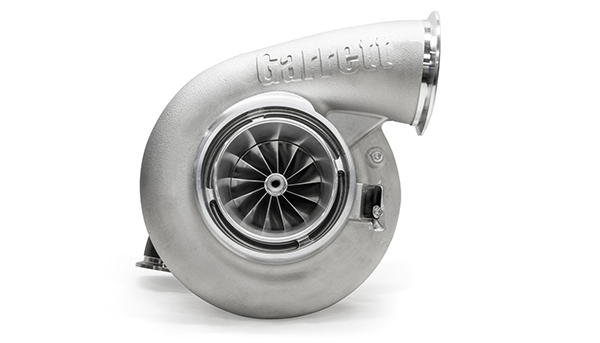
Choosing the appropriate supercharger and turbocharger sizes is crucial in achieving optimal performance with twin-charging. Selecting the right sizes for each is key – factors such as engine displacement, boost levels, and intended use play a significant role in determining the ideal components for the desired performance.
One of the remarkable aspects of twin-charging is that it doesn’t typically require extensive fuel system modifications. According to Stauffer, as long as you inspect the fuel for the power you want and inspect the air system for the power you want, everything generally falls into place. This simplicity and flexibility may make twin-charging an attractive option for engine builders and enthusiasts seeking to enhance their diesel-powered vehicles.
For Birdsall’s engine, Stauffer and team used an S&S CP4 fuel pump. He said that in the end it all comes down to tuning.
“The biggest thing you have to worry about is the bypass valve control for boost control, so you make sure you’re not over boosting or under boosting,” he says. “Basically, you run the bypass valve fully closed at low rpm, and at light loads, high rpm. Say for instance, you’re shifting – you’re losing your heat energy to your turbo. If you shift at 4,500 rpm, when you go to zero fuel, you close the bypass valve to help keep the turbo spooled up and going as you’re shifting, and then open it back up, assuming your boost pressure is at your target afterwards.”
While twin-charging offers numerous benefits, there are a few considerations to keep in mind. The continuous parasitic loss from the supercharger can affect fuel economy, and managing intake temperatures becomes crucial to prevent overheating. Although twin-charging has proven highly successful with smaller displacement engines like the 3.0L EcoDiesel, Stauffer emphasized that the concept can be applied to engines of any size.
“Twin-charging can in theory be implemented on any engine,” Stauffer notes. “The key lies in understanding the dynamics of the air system and designing an appropriate setup. We’ll likely see it become more common soon.”
Looking ahead, Stauffer expressed his hope for the wider adoption of twin-charging setups. He believes that once the concept gains publicity and is backed by real-world data, more enthusiasts and engine builders will be eager to explore the potential of twin-charged engines in the performance world. EB

